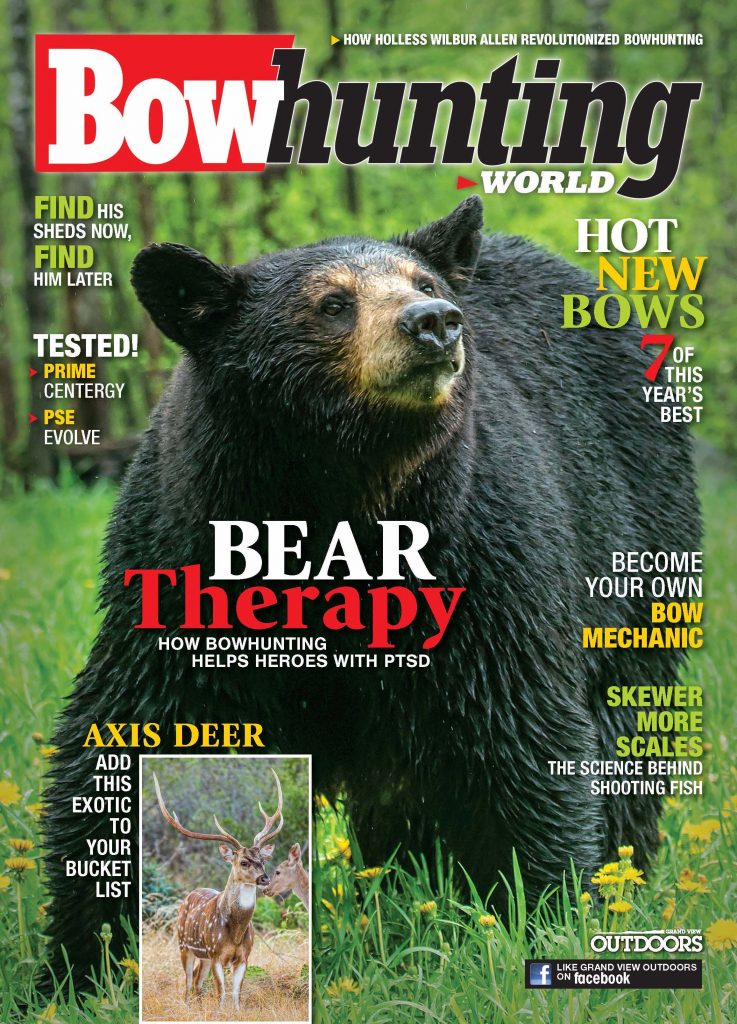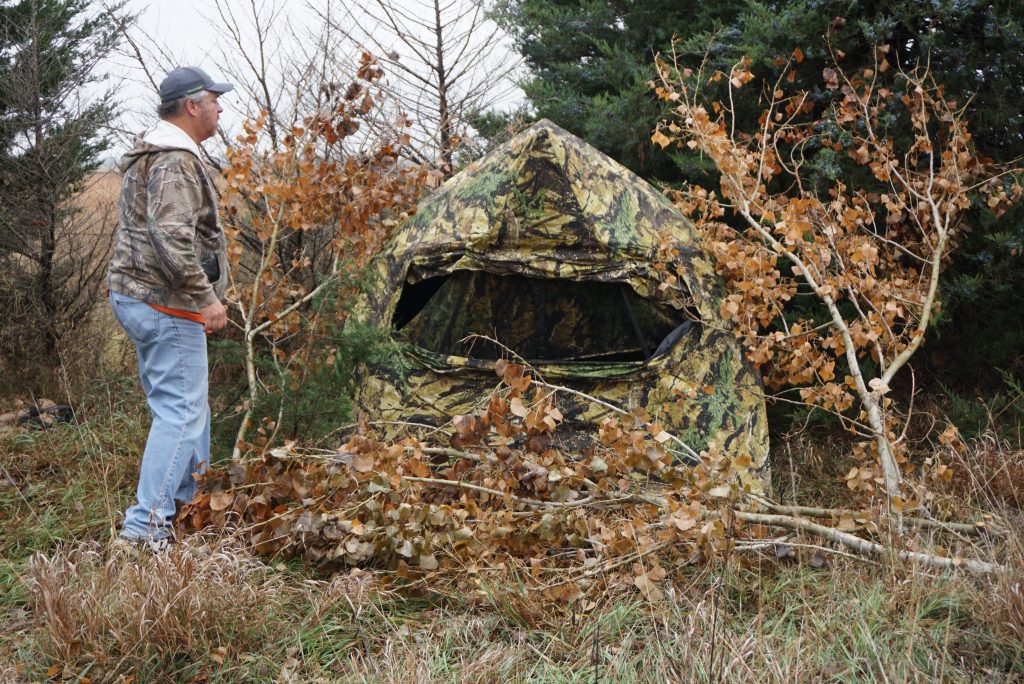A pair of does fed out of the woods just 40 yards from my blind. I lifted my binoculars, took a good look at them and scanned the woods for an approaching buck. The unseasonably warm weather mixed with the current moon phase had the deer coming out late. I watched them for 15 minutes as they fed out in front of my positon, eventually ending up on the downwind side of my blind. I held my breath, hoping my Wildlife Research Scent Killer Gold routine married with the airtight nature of my elevated blind would keep my human stink from their noses.
The first doe passed through my scent cone without so much as a twitch, but the second one picked up something. The big doe lifted her nose high and stared back in my direction, stomping her hoof as if to challenge me to show myself. Within a minute she dismissed what her nose was telling her and went back to feeding on the tender, green blades of rye emerging from the ground. I sighed with relief and scanned back behind me to see another doe coming out to feed.

From our June issue
Watching deer body language provides some incredible intel, and when the two does downwind of me went on high alert, I paid attention. Both bristled and watched back across the long expanse of open grassland. Peering into the distance, they pointed out another deer making its way across the field. It only took a second to see the antlers protruding from its head. He was a shooter.
The buck came directly to the does and harassed them until he was satisfied they weren’t ready to breed. Knowing there would be no passing on of his genes, he immediately went back to worrying about his belly and started feeding. I quietly slid the front window open in anticipation of the buck feeding in that direction.
My bow had been cocked outside the blind that afternoon. Since that time, it had been in the corner of the blind pointing down. For safety reasons, I never place the bow where I can accidently get my finger in the path of the string. Having it pointed down means I can grab it by the stock and lift it carefully into position while always keeping it pointed in a safe direction. In a hard-sided blind, or box, any sound is amplified, as though it’s coming out of a subwoofer. Bang the bow against a wall, and it sounds like a bass drum beat. It may be louder in the blind, but the deer will certainly hear it outside.
I practice raising my bow to know exactly how much room I need to lift it and get it pointed out a window. Taking the time to practice and measure allows you to have your chair in the right spot so there are no unnecessary movements when deer are close. My chair’s position allowed me to watch out of all my windows, and I could shoot out of two of the three. If I had a shot out my left window, I’d have to kneel on the floor for a clear shooting lane.
The buck slowly fed into view. I anticipated a shot opportunity and carefully laid an arrow on the rail and slid it into position. Safety routines are important, and having a crossbow cocked with an arrow on the rail can be hazardous. I can only imagine the flying debris like sharp broadhead and arrow fragments if an accidental discharge occurred in a box blind. Yikes!
With the bow pointed out the window, I slid the arrow back until the anti-dry-fire lever on my TenPoint moved to indicate the nock was against the string. I laid the stirrup (the device you step in and use to cock the bow) on the front of the window ledge for support. It provided more than adequate clearance for my arrow and broadhead to exit cleanly through the opening. It also provided the clearance required for a pair of soon-to-be uncocked crossbow limbs.
The buck turned broadside at 37 yards, and I settled my crosshair on his vitals. I gently squeezed the trigger and my arrow was on its way. I learned an important lesson the second I pulled the trigger. I had never hunted out of a hard-sided blind with a crossbow and was more familiar with the pop-up varieties with shoot-through screen windows. Having the stirrup resting on the window made the entire blind into a sound box, amplifying the noise of my bow. My arrow struck the buck through the top of the lungs and pierced the bottom of his spine, dropping him in his tracks. The only rationale I have for catching the spine is the buck heard my bow go off and ducked with the arrow in flight.

Before heading to the woods and blending in your ground fortress, take the time to learn how to maneuver your horizontal rig inside the blind so you don’t create game-spooking noise in the field. Also, be sure to take a few practice shots from multiple windows.
I’ve since developed a new approach to shooting from a box blind. Attaching a SteddyEddy to my bow allows me to use the monopod as a rest and doesn’t create any unnecessary noise. In a seated position, I can nestle the SteddyEddy in the top of my boot, leaning the bow forward or tipping it back to get exactly on target. With that setup, the noise of my crossbow is contained within the blind.
Remember, hunting from a ground blind isn’t as simple as it seems. If you’re hunting from a blind you set up, be sure to take time to practice and develop a perfect hunting routine. If you’re on a guided hunt, I highly recommend asking the outfitter to take you into your blind an hour earlier than planned so you can familiarize yourself with the blind.
Featured photo: John Hafner Photography






